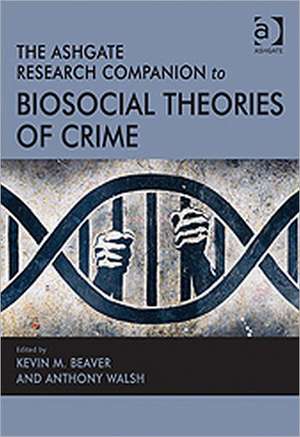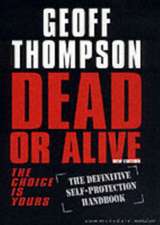The Ashgate Research Companion to Biosocial Theories of Crime
Autor Anthony Walsh Editat de Kevin M. Beaveren Limba Engleză Hardback – 8 noi 2011
Preț: 776.94 lei
Preț vechi: 1110.26 lei
-30% Nou
Puncte Express: 1165
Preț estimativ în valută:
148.69€ • 154.66$ • 122.75£
148.69€ • 154.66$ • 122.75£
Carte tipărită la comandă
Livrare economică 14-28 aprilie
Preluare comenzi: 021 569.72.76
Specificații
ISBN-13: 9781409408437
ISBN-10: 1409408434
Pagini: 460
Dimensiuni: 174 x 246 x 35 mm
Greutate: 1.16 kg
Ediția:1
Editura: Taylor & Francis
Colecția Routledge
Locul publicării:Oxford, United Kingdom
ISBN-10: 1409408434
Pagini: 460
Dimensiuni: 174 x 246 x 35 mm
Greutate: 1.16 kg
Ediția:1
Editura: Taylor & Francis
Colecția Routledge
Locul publicării:Oxford, United Kingdom
Cuprins
Contents: Part I Introduction and Overview of Biosocial Criminology: Biosocial criminology, Kevin M. Beaver and Anthony Walsh; Biosocial interactions and correlates of crime, Anna Rudo-Hutt, Yu Gao, Andrea Glenn, Melissa Peskin, Yaling Yang and Adrian Raine; The relationship between low resting heart rate and antisocial behavior: correlation or causation?, Todd A. Armstrong. Part II Genetics and Crime: The genetics of criminality and delinquency, Lisabeth Fisher DiLalla and Sufna Gheyara; Molecular genetics and crime, John Paul Wright, Kristan Moore and Jamie Newsome; Gene x environment interactions in antisocial behavior, Christopher J. Ferguson. Part III The Brain and Crime: Neurotransmitters: indirect molecular invitations to aggression, Raymond E. Collins; The limbic system and crime, Matt DeLisi; Neurobiological perspectives of brain vulnerability in pathways to violence over the life course, Denise Paquette Boots; The neuroscientific basis of situational action theory, Kyle Treiber. Part IV Environments and Crime: The independence of criminological 'predictor' variables: a good deal of concerns and some answers from behavioral genetic research, H. Harrington Cleveland, Charles Beekman and Yao Zheng; Birth complications and the development of criminality: a biosocial perspective, Stephen G. Tibbetts; Presaging problem behavior: the mutability of child temperament, parenting, and family environments from gestation to age 3, Matt DeLisi and Michael G, Vaughn; Social class and criminal behavior through a biosocial lens, Anthony Walsh and David G. Mueller. Part V Evolutionary Psychology and Crime: Women's avoidance of rape: an evolutionary psychological perspective, William F. McKibbin and Todd K. Shackelford; The search for human rape and anti-rape adaptations: 10 years after A Natural History of Rape, Ryan M. Ellsworth and Craig T. Palmer; The nature and utility of low self-control, Richard P. Wiebe. Part VI Implications of Biosocial Research: Biosocial treatment and prevention strategies, Michael G. Vaughn and Ralph Groom; From petri dish to public policy: a discussion of the implications of biosocial research in the criminal justice arena, Joseph Rukus and Chris L. Gibson; Index.
Notă biografică
Kevin M. Beaver is Associate Professor, College of Criminology and Criminal Justice, Florida State University, USA and Anthony Walsh is Professor of Criminal Justice, Boise State University, USA
Recenzii
'What I love about the field of Criminology is that insofar as theories are concerned, Criminology welcomes all comers with open arms, while insofar as empirical methodology is concerned, Criminology never strays from its singular devotion to a standard of excellence. This exciting new book edited by Beaver and Walsh is quintessentially Criminology. It marries innovative bio-social theory of crime with rigorous empirical science...and somehow manages to make it all very readable. Anyone who wishes to be a contemporary criminologist must make themselves familiar with the content of this new book. Any criminologist who does not read this book is by definition falling behind the times.' Terrie E. Moffitt, Duke University, USA and King's College London, UK 'This is the most impressive, comprehensive, and informative review of research on biological contributions to criminology. It should be required reading for all criminologists who are interested in understanding and explaining criminal behaviour.' David P. Farrington, University of Cambridge, UK
Descriere
This work spans multiple levels of analysis and thus multiple disciplines, offering an essential overview of the current state of research in the field. The authors are experts in a variety of disciplines (sociology, psychology, biology, criminal justice, and neuroscience), but they all have in common a strong interest in criminal behaviour. This unique book is essential and accessible reading for all students and scholars in the field.











